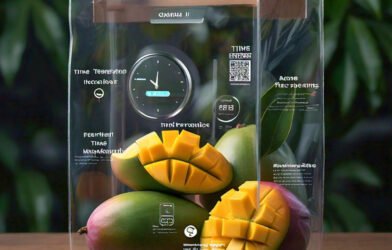Introduction
Nucellar embryogenesis is a fascinating reproductive process that occurs in certain plants, including mango (Mangifera indica L.) cultivars. This mechanism is crucial for plantlet regeneration, especially in both monoembryonic and polyembryonic varieties. Understanding this process opens avenues for improving mango cultivation and enhancing genetic diversity.
The Process of Nucellar Embryogenesis
Nucellar embryogenesis involves the development of embryos from the nucellus, a tissue within the ovule. In mango cultivars, this process can yield multiple embryos from a single ovule, which is prominent in polyembryonic types. This capability enhances the potential for producing new plantlets. In contrast, monoembryonic mango cultivars typically develop a single, dominant embryo, thereby showcasing a different approach to reproduction.
Implications for Plantlet Regeneration
The significance of understanding nucellar embryogenesis extends beyond mere academic interest; it has practical implications for horticulture. Enhanced plantlet regeneration systems can lead to efficient propagation methods for both monoembryonic and polyembryonic mango cultivars. By mastering these techniques, horticulturists can produce healthier plants with improved yield and disease resistance. Research into these processes continues to evolve, contributing to the sustainable cultivation of mangoes globally.
Nucellar Embryogenesis and Plantlet Regeneration in Mango Cultivars:
| Aspect | Details |
|---|---|
| Concept | Nucellar embryogenesis is an asexual mode of reproduction where embryos develop from nucellar tissue, leading to genetically uniform plantlets in mango cultivars. |
| Importance | – Ensures true-to-type propagation of elite mango cultivars. – Produces disease-free, vigorous seedlings. – Overcomes challenges of zygotic seed variability. |
| Process | 1. Selection of Seeds – Mature polyembryonic mango seeds are selected. 2. Nucellar Tissue Isolation – The nucellar tissue is excised from the seed. 3. Culture Initiation – Tissue is cultured on a nutrient medium with growth regulators. 4. Embryo Induction & Development – Nucellar embryos proliferate and mature. 5. Plantlet Regeneration – Mature embryos develop into shoots and roots. 6. Hardening & Field Transfer – Acclimatized plants are transferred to soil. |
| Suitable Mango Cultivars | – ‘Alphonso’ – ‘Banganapalli’ – ‘Kesar’ – ‘Dashehari’ – ‘Totapuri’ (Highly polyembryonic) |
| Growth Medium Used | Murashige and Skoog (MS) medium supplemented with cytokinin (BAP), auxins (NAA, IBA), and activated charcoal to support embryo growth. |
| Advantages | – Produces genetically identical, high-quality seedlings. – Faster multiplication rate compared to conventional propagation. – Disease resistance and uniform plant performance. |
| Challenges | – Some cultivars show low embryogenesis rates. – Requires controlled lab conditions and skilled handling. – Acclimatization and survival rate in field conditions can vary. |
| Applications | – Large-scale commercial mango propagation. – Conservation of elite and endangered mango cultivars. – Research and breeding programs. |






What Is Nucellar And Nucellar Embryogenesis? -
[…] What is Nucellar and nucellar embryogenesis? […]